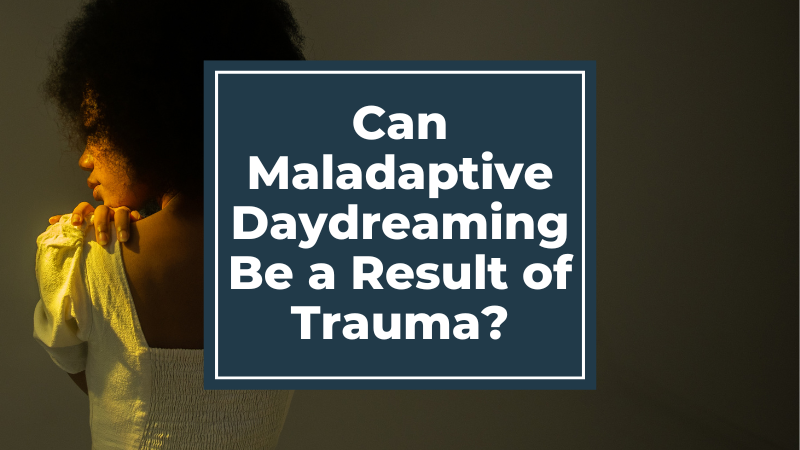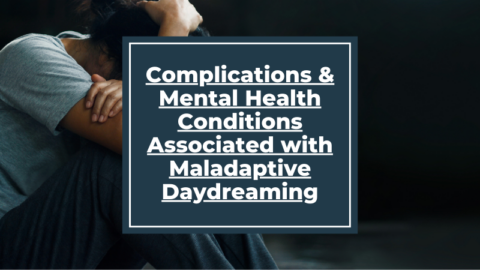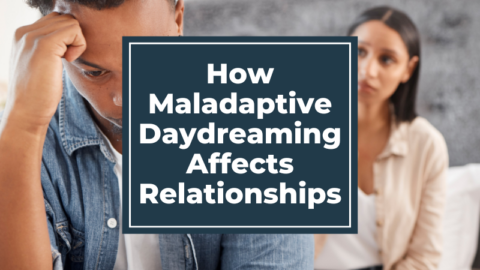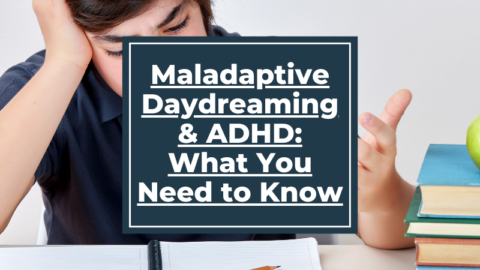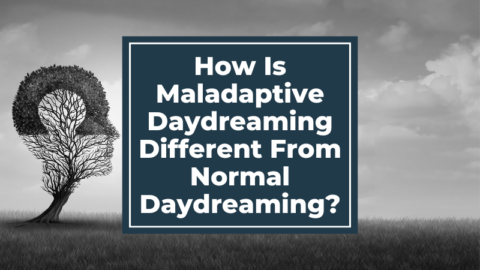Maladaptive daydreaming can be associated with trauma or serve as a coping mechanism for underlying emotional issues. While not everyone with maladaptive daydreaming has a history of trauma or emotional difficulties, there is a significant proportion of individuals who report a connection between their daydreaming behaviors and past traumatic experiences or emotional challenges.
- Trauma: For some individuals, maladaptive daydreaming may serve as a way to escape or cope with the distressing effects of trauma. Traumatic experiences can lead to feelings of helplessness, fear, or overwhelming emotions, and daydreaming can provide temporary relief from these intense feelings.
- Emotional Regulation: Maladaptive daydreaming can also be a coping mechanism for individuals struggling with underlying emotional issues such as depression, anxiety, loneliness, or dissatisfaction with reality. Daydreaming allows them to create vivid and detailed scenarios that offer emotional fulfillment, control, or a sense of belonging that may be lacking in their real-life experiences.
Individual experiences and factors contributing to maladaptive daydreaming can vary. Therefore, a comprehensive assessment by a qualified mental health professional is necessary to understand the specific factors contributing to an individual’s maladaptive daydreaming and to develop an appropriate treatment plan.
What Kinds of Trauma Might a Person with Maladaptive Daydreaming Have Experienced?
The types of past trauma experienced by individuals with maladaptive daydreaming can vary widely. Trauma refers to any distressing or disturbing event or series of events that overwhelm an individual’s ability to cope. Some common types of trauma that may be associated with maladaptive daydreaming include:
- Childhood Abuse: Physical, sexual, or emotional abuse experienced during childhood can have a profound impact on a person’s psychological well-being. These traumatic experiences can lead to maladaptive daydreaming as a way to escape or cope with the pain and distress associated with the abuse.
- Neglect: Childhood neglect, including emotional neglect or lack of adequate care, can also contribute to the development of maladaptive daydreaming. When a child’s emotional and physical needs are not met, they may turn to daydreaming as a way to compensate for the lack of nurturing and emotional support.
- Bullying or Peer Rejection: Experiences of bullying, social rejection, or isolation during childhood or adolescence can be traumatic and contribute to maladaptive daydreaming. Daydreaming can offer a refuge from real-life social difficulties and provide a sense of control and positive social experiences in the imagined world.
- Loss or Grief: The loss of a loved one, whether through death, separation, or other forms of loss, can be traumatic and impact an individual’s ability to cope with the associated grief and emotional pain. Maladaptive daydreaming may serve as a way to escape the reality of the loss and find solace in an imagined world.
- Accidents or Physical Trauma: Experiencing a serious accident, injury, or physical trauma can have a lasting impact on a person’s well-being. The emotional and physical distress associated with such events may lead to maladaptive daydreaming as a coping mechanism.
- Medical Trauma: Going through significant medical procedures, chronic illnesses, or dealing with a serious health condition can be traumatic. Maladaptive daydreaming may be used as a way to manage the anxiety, fear, or uncertainty associated with medical experiences.
- Relationship Trauma: Toxic or abusive relationships, whether romantic, familial, or friendship-based, can be traumatic and contribute to maladaptive daydreaming. Individuals may use daydreaming as a means to escape the difficulties and emotional pain associated with these relationships.
- War or Conflict: People who have experienced war, military combat, or other forms of conflict may develop maladaptive daydreaming as a way to cope with the traumatic events they witnessed or participated in. Daydreaming can provide an escape from the distressing memories and emotions associated with the trauma of war.
- Sexual Assault or Rape: Survivors of sexual assault or rape may experience ongoing psychological distress and struggle with various symptoms, including maladaptive daydreaming. Daydreaming can serve as a way to escape from traumatic memories and associated emotions.
- Domestic Violence: Individuals who have experienced domestic violence, whether physical, emotional, or sexual, may develop maladaptive daydreaming as a coping mechanism. Daydreaming offers a temporary escape from the abusive environment and the fear or stress associated with it.
- Natural Disasters: Surviving a natural disaster, such as a hurricane, earthquake, or flood, can be a traumatic experience. The aftermath of such events may leave individuals with feelings of anxiety, helplessness, and a need for escapism through daydreaming.
- Witnessing Violence or Traumatic Events: Being a witness to violence, accidents, or other traumatic events can have a lasting impact on a person’s mental well-being. The distressing memories and emotions associated with these experiences may lead to maladaptive daydreaming as a way to cope and create alternative realities.
Why Do I Have Maladaptive Daydreaming If I Don’t Feel Like I Have Any Trauma?
While trauma can be a common underlying factor in maladaptive daydreaming, it’s important to note that not all individuals who experience maladaptive daydreaming have a history of trauma. Maladaptive daydreaming can also be influenced by other factors, such as individual personality traits, coping mechanisms, environmental factors, or underlying psychological conditions.
Some individuals may engage in maladaptive daydreaming as a way to cope with stress, boredom, or dissatisfaction with certain aspects of their lives. It can serve as a form of escape or a way to create a more idealized reality. Additionally, maladaptive daydreaming can be associated with conditions like attention deficit hyperactivity disorder (ADHD) or obsessive-compulsive disorder (OCD), where excessive daydreaming becomes a prominent symptom.
Can Healing My Trauma Help Me Overcome My Maladaptive Daydreaming Tendencies as Well?
Healing from trauma can certainly have a positive impact on various aspects of your life, including your tendency for maladaptive daydreaming. While maladaptive daydreaming may have multiple underlying causes, addressing and working through trauma can be an essential step in managing and reducing its intensity.
By addressing and healing from trauma, you may experience a reduction in distressing emotions, intrusive thoughts, and other symptoms that contribute to maladaptive daydreaming. Therapy approaches such as trauma-focused therapy, cognitive-behavioral therapy (CBT), or eye movement desensitization and reprocessing (EMDR) can be effective in processing traumatic experiences and developing healthier coping mechanisms.
Through therapy, you can gain insights into the connections between your trauma and maladaptive daydreaming, and learn alternative ways to manage stress, regulate emotions, and cope with triggers. Additionally, therapy can help you develop a better understanding of yourself, enhance self-esteem, and improve overall well-being, which can positively impact your relationship with maladaptive daydreaming.
It’s important to note that everyone’s healing journey is unique, and progress may take time. Patience, self-compassion, and consistency in therapeutic work are key. Working with a qualified mental health professional can provide you with the guidance and support needed to navigate the healing process and address both trauma and maladaptive daydreaming effectively.
If you’d like to discuss your thoughts and experiences with maladaptive daydreaming with other Maladaptive Daydreamers, join the Maladaptive Daydreaming Forum.

